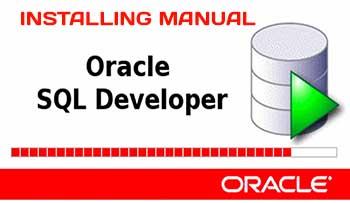
I hope to have this fixed in time for version 19.1.Oracle Database 19c is the world’s leading relational database, and it gets even better when combined with Oracle SQL Developer.Įveryone knows that SQL Developer is a great tool for creating world-class applications. I found after running a profile capture, I had to close the editor and re-open to see the actual reports. These are on the database server – so you’ll need SSH access at a minimum to read these. Remember how I said up above you needed a Database Directory? Guess what’s in there? That’s right, some HTML reports. It was introduced in 11gR1 – you can read about it new New Features Guide. Remember how we started this post with the promise to track SQL and PL/SQL run times separately? That’s what we’ll see on the Namespace tab – So we could tune our SQL, the very most we could gain in 2% of our overall execution time.Īnd finally we have the module overview – which is a flattened view of the Call Hierarchy: Some idiot artificially added 5 seconds to our run time with a call to DBMS_LOCK.SLEEP! This is a somewhat NEW feature.

Pl sql developer tool license#
Of course, you could also open up our RTSM Report and see if the Run was still in there…but, that requires the Tuning Pack license for your database. If I click on one of those SQL_ID’s, then we can look at it’s associated plan in v$sql_plan – Check your Preferences for Plan Display options if you’re not seeing the desired plan table columns. We can also see that there were some ‘static sql executions’ as well. Wait, what’s that? It’s a fancy way of saying that one call took 5 seconds, whereas the entire run took only 5.1 seconds, so something weird was happening there. We can see that ADD_EMP2() also called something called DO_NOTHING_COMMENTS(), and THAT called something DBMS_LOCK(), which took….5,000,402 μs. We have 3 runs, click on one to see the details below.
Pl sql developer tool code#
Once the profiler run has finished, we can head over to the Profiles panel in the code editor. So it should be obvious by now, but if it’s not – we’re about to EXECUTE this block of code, and the profiler is going to record everything going on in terms of execution time. Of course you want the SQL Stats too – that’s why it’s on by default. Notice how there’s a hierarchy in the button glyph? Believe me, it’s there. Hit this button in the Code Editor – Next to Debug. where I need to go to have the biggest impact on performance when it comes to tuning my SQL or PL/SQL. When it’s done, I’ll see where the “suck” is, i.e. Ok, so pre-requisites accounted for, and I’m ready to start my profiler run. You’ll just need a high-level priv account to go out and create the DB Directory – be ready to ask a DBA for help in other words. SQL Developer will take care of these pre-requisites for you if you ask for a Profiler run and they’re missing from your system. a Database Directory to write generated some reports.Makes me feel like an idiot whenever I try to pronounce ‘hierarchical’ĭid you know: SQL Developer makes using the profiler very easy!įor the profiler to be available, you’ll need :.Accounts for SQL and PL/SQL execution times separately.Reports the dynamic execution profile of your PL/SQL program, organized by subprogram calls.The PL/SQL Hierarchical Profiler does 3 things of note:

I have a PL/SQL block of code – I wonder where most of the time is being spent to execute it? Well guess what? The PL/SQL team has given us an interface to answer this exact question.


 0 kommentar(er)
0 kommentar(er)
